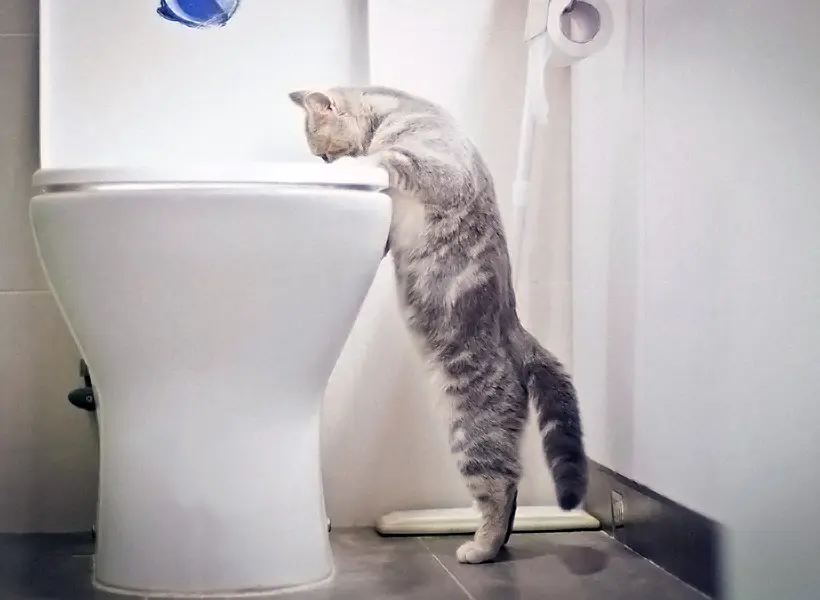Why You Shouldn't Flush Cat Poop Down Your Toilet - Maintain Your Plumbing Health
Why You Shouldn't Flush Cat Poop Down Your Toilet - Maintain Your Plumbing Health
Blog Article
This post listed below involving How to Dispose of Cat Poop and Litter Without Plastic Bags is seriously motivating. Give it a go and make your own personal ideas.

Introduction
As cat owners, it's necessary to bear in mind exactly how we throw away our feline good friends' waste. While it might appear convenient to purge cat poop down the toilet, this technique can have destructive effects for both the setting and human wellness.
Ecological Impact
Purging feline poop introduces damaging microorganisms and bloodsuckers right into the water system, presenting a considerable danger to water communities. These pollutants can negatively impact aquatic life and compromise water quality.
Health Risks
In addition to environmental concerns, flushing pet cat waste can additionally posture wellness threats to human beings. Pet cat feces might consist of Toxoplasma gondii, a parasite that can cause toxoplasmosis-- a possibly extreme disease, particularly for pregnant females and people with weakened immune systems.
Alternatives to Flushing
Fortunately, there are more secure and a lot more accountable ways to dispose of pet cat poop. Take into consideration the following choices:
1. Scoop and Dispose in Trash
One of the most common method of taking care of feline poop is to scoop it into a biodegradable bag and throw it in the trash. Make certain to utilize a dedicated clutter scoop and throw away the waste quickly.
2. Usage Biodegradable Litter
Select biodegradable pet cat trash made from products such as corn or wheat. These trashes are environmentally friendly and can be securely dealt with in the garbage.
3. Hide in the Yard
If you have a yard, consider hiding pet cat waste in a designated area far from veggie gardens and water sources. Make certain to dig deep adequate to prevent contamination of groundwater.
4. Install a Pet Waste Disposal System
Invest in an animal garbage disposal system specifically developed for feline waste. These systems use enzymes to break down the waste, decreasing odor and ecological influence.
Verdict
Accountable family pet ownership expands beyond providing food and sanctuary-- it likewise involves correct waste management. By avoiding purging feline poop down the bathroom and opting for alternative disposal methods, we can lessen our ecological impact and safeguard human health and wellness.
Why Can’t I Flush Cat Poop?
It Spreads a Parasite
Cats are frequently infected with a parasite called toxoplasma gondii. The parasite causes an infection called toxoplasmosis. It is usually harmless to cats. The parasite only uses cat poop as a host for its eggs. Otherwise, the cat’s immune system usually keeps the infection at low enough levels to maintain its own health. But it does not stop the develop of eggs. These eggs are tiny and surprisingly tough. They may survive for a year before they begin to grow. But that’s the problem.
Our wastewater system is not designed to deal with toxoplasmosis eggs. Instead, most eggs will flush from your toilet into sewers and wastewater management plants. After the sewage is treated for many other harmful things in it, it is typically released into local rivers, lakes, or oceans. Here, the toxoplasmosis eggs can find new hosts, including starfish, crabs, otters, and many other wildlife. For many, this is a significant risk to their health. Toxoplasmosis can also end up infecting water sources that are important for agriculture, which means our deer, pigs, and sheep can get infected too.
Is There Risk to Humans?
There can be a risk to human life from flushing cat poop down the toilet. If you do so, the parasites from your cat’s poop can end up in shellfish, game animals, or livestock. If this meat is then served raw or undercooked, the people who eat it can get sick.
In fact, according to the CDC, 40 million people in the United States are infected with toxoplasma gondii. They get it from exposure to infected seafood, or from some kind of cat poop contamination, like drinking from a stream that is contaminated or touching anything that has come into contact with cat poop. That includes just cleaning a cat litter box.
Most people who get infected with these parasites will not develop any symptoms. However, for pregnant women or for those with compromised immune systems, the parasite can cause severe health problems.
How to Handle Cat Poop
The best way to handle cat poop is actually to clean the box more often. The eggs that the parasite sheds will not become active until one to five days after the cat poops. That means that if you clean daily, you’re much less likely to come into direct contact with infectious eggs.
That said, always dispose of cat poop in the garbage and not down the toilet. Wash your hands before and after you clean the litter box, and bring the bag of poop right outside to your garbage bins.
https://trenchlesssolutionsusa.com/why-cant-i-flush-cat-poop/

I'm certainly very eager about Don’t flush cat feces down the toilet and I am hoping you liked the new page. Appreciated our blog entry? Please share it. Let other people locate it. Thanks a lot for your time. Visit again soon.
Visit Site Report this page